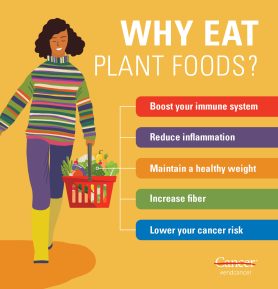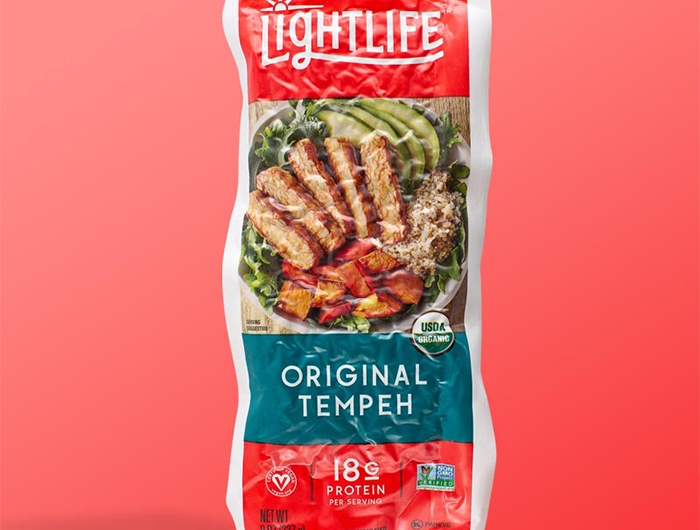
Despite being one of most healthy diets, veganism can still pose some health risks. According to some studies, veganism may lead to mental health problems and depression in some individuals. Going vegan may also cause vitamin B12 deficiencies. Additionally, vegans may have lower bone density. These risks are possible to avoid.
Vegans should also make sure to eat enough calcium. Although it may be easy to get calcium from dark green leafy vegetables, vegans can also get calcium from fortified foods or supplements. Vegans should also eat plenty of nuts, seeds, and legumes. Finally, vegans need to eat a lot of fiber. Because fiber is essential for proper digestion, plant-based foods are a good choice. Vegans should avoid foods high levels of phytic acid. This acid damages the small intestines and hinders the absorption crucial nutrients.
Vegans may also be deficient vitamin B12. Vitamin B12 is not found in meat, poultry, or eggs, and vegans should make sure to supplement their diets. German authorities have warned against vegan diets, claiming that vegans could be missing vital nutrients. A vegan diet can also increase the risk of anemia and preterm births. There is also a higher likelihood of stroke.

According to a study done in Poland, children who ate vegan food had stronger bones than those who ate meat. In addition, they were 3cm shorter than children who ate beef. Moreover, they had lower vitamin D levels, calcium levels, and iron levels. Also, children on a vegan diet had lower vitamin B12 levels that children who ate more meat.
A British Medical Journal study found that stroke rates were 20% higher in those who eat a plant based diet. The study included 48,000 people over 18 years. It also found that vegans had lower rates of coronary disease.
Also, the study revealed no difference in cancer death rates. Researchers suspect that vegans may have less vitamin B12 than the rest of the population, which could account for the higher stroke rate. This vitamin is vital for the development red blood cells and may contribute to the higher stroke rate.
Veganism can also lead to deficiency in vitamin D, iron and calcium. Vegans should consume plenty of whole grains as well as nuts. Vegans should also consider drinking non-dairy milk products with vitamin D. This nutrient is very important for heart health.

Going vegan is generally a healthy decision. Before you decide to go vegan, be sure to weigh all the possible risks. It is especially important to remember that a vegan diet is not healthy for pregnant women and nursing mothers. Vegans are more likely to experience anxiety and depression.
FAQ
What should my weight be for my age and height? BMI chart & calculator
A body mass index calculator (BMI) is the best way to find out how much weight you should lose. A healthy BMI range should be between 18.5- 24.9. You should lose about 10 pounds each month if you are trying to lose weight. Simply enter your weight and height into the BMI calculator.
Check out this BMI chart to determine if you are overweight or obese.
What can I do to lower my blood pressure?
Find out the causes of high blood pressure first. Next, take steps that will reduce the risk. You can do this by eating less salt, losing weight, or taking medication.
Also, make sure to get enough exercise. Walking is a great alternative if you don't have the time or energy to exercise regularly.
If you are unhappy about how much exercise you do, you might consider joining a fitness club. You will likely want to join an exercise group that shares your goals. It is easier to adhere to a fitness routine when someone else will be there with you.
How to measure body fat?
A Body Fat Analyzer (BFA) is the best method to measure bodyfat. These devices are used to measure the percentage of bodyfat in people who desire to lose weight.
How can weight change with age?
How do you tell if there are any changes in your bodyweight?
Weight loss occurs when there is less fat than muscle mass. This means that daily energy needs must be greater than the calories consumed. Low activity levels are the leading cause for weight loss. Other causes include illness, stress, pregnancy, hormonal imbalances, certain medications, and poor eating habits. If there is more body fat than muscle mass, then weight gain can occur. It happens when people eat more calories than they use during a given day. Overeating, increased physical activity and hormonal changes are all common reasons.
Our bodies lose weight because we eat fewer calories than we burn. The main reason we lose weight is because we exercise more often. This increases our metabolism rate and burns more calories each day. But this doesn't guarantee that we'll lose weight. The important thing is to see if we're losing or gaining muscles. Weight loss is possible if you burn more calories than you consume. But if we're consuming more calories than we're burning, then we're actually storing them as fat.
As we get older, we tend not to be as mobile and move as fast. We also tend not to eat as much food as we used to when we were younger. This is why we tend to gain weight. On the flipside, we are more muscular than we really need and appear larger.
There's no way to tell how much weight you've lost unless you weigh yourself every week. There are many ways to determine your weight. You can measure your waist, your hips and your thighs. Some prefer to use bathroom scales, while others prefer tape measures.
For a better track of your progress, try to weigh yourself once per week and measure your waistline once every month. To see how far you have come, you can take photos of yourself every few month.
Online measurements of your height, weight and body mass can help you determine how much. You'd likely weigh 180 pounds if you were 5'10 tall and 180 pounds if you were 180lbs.
Does being cold give you a weak immune system?
Cold makes you weaker because you have less white blood cells to fight infections. But, cold makes you feel better. Your brain releases endorphins that reduce pain.
What's the difference between a calorie and kilocalorie?
Calories are units that measure the energy content of food. A calorie is a unit of measure. One calorie contains the energy needed to raise the temperature of one gram of water by one degree Celsius.
Kilocalories is another name for calories. Kilocalories are measured as a thousandth of a calorie. For example, 1000 calories equals one kilocalorie.
What's the difference between a virus & a bacterium?
A virus can be described as a microscopic organism incapable of reproducing outside its host cell. A bacterium can be described as a single-celled organism which reproduces by splitting in two. Viruses are small, around 20 nanometers in size. Bacteria are much larger, at 1 micron.
Viruses can spread from contact with bodily fluids that are infected such as saliva, urine or semen. Bacteria is usually spread directly from surfaces or objects contaminated with bacteria.
Viral infections can be transmitted through skin cuts, scrapes and bites. They may also enter through the nose, mouth, eyes, ears, vagina, rectum , or anus.
Bacteria can enter the body through cuts, scrapes burns and other injuries to the skin. They can also get into our bodies via food, water or soil.
Both bacteria as well as viruses can cause illness. But viruses do not have the ability to multiply within their hosts. They can only infect living cells and cause illness.
Bacteria can grow in their hosts and cause disease. They can spread to other parts of our bodies. Antibiotics are needed to eliminate them.
Statistics
- According to the Physical Activity Guidelines for Americans, we should strive for at least 150 minutes of moderate intensity activity each week (54Trusted Source Smoking, harmful use of drugs, and alcohol abuse can all seriously negatively affect your health. (healthline.com)
- This article received 11 testimonials and 86% of readers who voted found it helpful, earning it our reader-approved status. (wikihow.com)
- Extra virgin olive oil may benefit heart health, as people who consume it have a lower risk for dying from heart attacks and strokes according to some evidence (57Trusted Source (healthline.com)
- WHO recommends consuming less than 5% of total energy intake for additional health benefits. (who.int)
External Links
How To
What does the meaning of "vitamin?"
Vitamins are organic substances found naturally in food. Vitamins help us absorb nutrients from foods we eat. Vitamins are not made by the body, so they must be obtained through food.
There are two types if vitamins: water soluble, and fat soluble. Water-soluble vitamins dissolve in water easily. You can find vitamin C,B1 or thiamine, B2 or riboflavin and B3 or niacin. B6 is pyridoxine. Folic acid, biotin and pantothenic are some examples. The liver and fatty tissues are home to fat-soluble vitamins. Some examples include vitamin D and E, K, A, beta carotene, and A-vitamins.
Vitamins can be classified according to biological activity. There are eight major vitamin groups:
-
A – Essential for normal growth, and the maintenance of good health.
-
C - important for proper nerve function and energy production.
-
D - essential for healthy teeth and bones.
-
E - needed for good vision and reproduction.
-
K - essential for healthy nerves, muscles, and joints.
-
P - essential for strong bones, teeth and tendons
-
Q - aids digestion and absorption of iron.
-
R - necessary for making red blood cells.
The recommended daily allowance for vitamins (RDA) varies according to age, gender, or physical condition. The U.S. Food and Drug Administration (FDA) sets the RDA values.
For adults aged 19 or older, the RDA of vitamin A is 400mg per day. Because it is essential for the development of the fetus, pregnant women should consume 600 micrograms per days. Children ages 1-8 require 900 micrograms per day. Infants under one year of age require 700 micrograms per day, but this amount decreases to 500 micrograms per day between 9 months and 12 months of age.
Children aged between 1-18 years old who are obese require 800 micrograms per Day, while overweight children need 1000 micrograms every day. Children underweight or obese will require 1200 micrograms a day to meet their nutritional requirements.
Children aged 4-8 who have anemia are required to consume 2200 micrograms of Vitamin C daily.
Adults over 50 years of age need 2000 micrograms per day for general health. Because of their higher nutrient needs, women who are pregnant or nursing need 3000 mg per day.
1500 micrograms is the recommended daily intake for adults aged 70+, as they lose 10% of their muscle every ten years.
Women who are pregnant or nursing need more than the RDA. Pregnant women need 4000 micrograms per dayduring pregnancy and 2500 micrograms per day after delivery. Breastfeeding mothers need 5000 micrograms per day when breast milk is being produced.